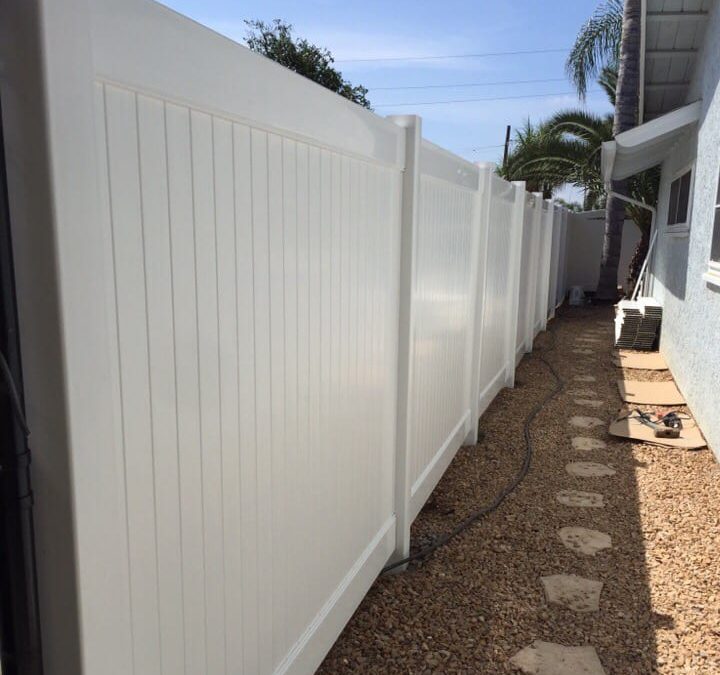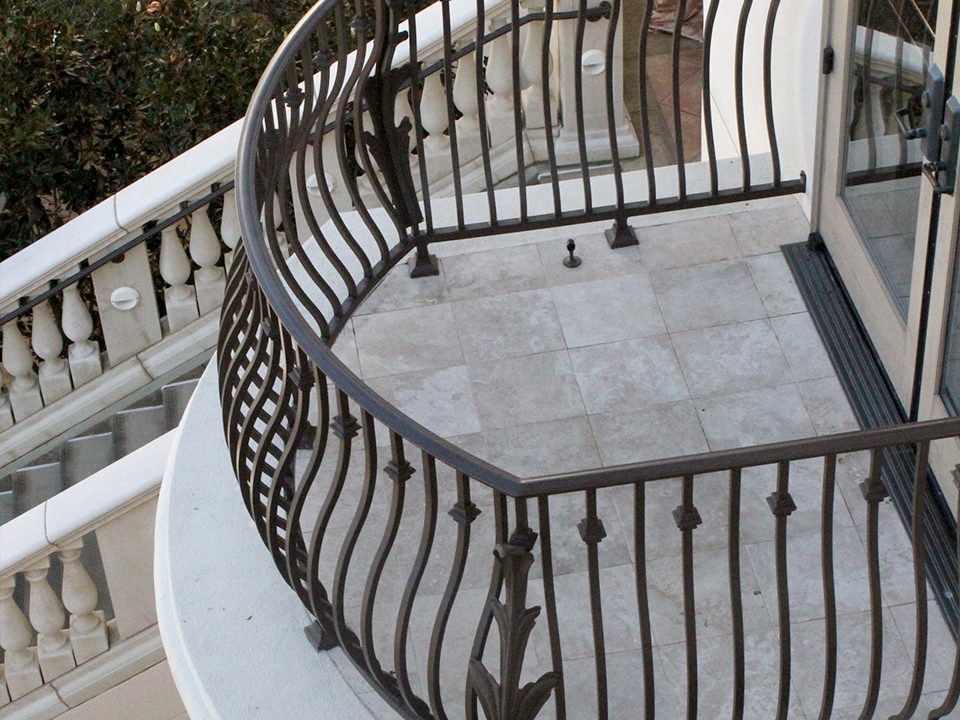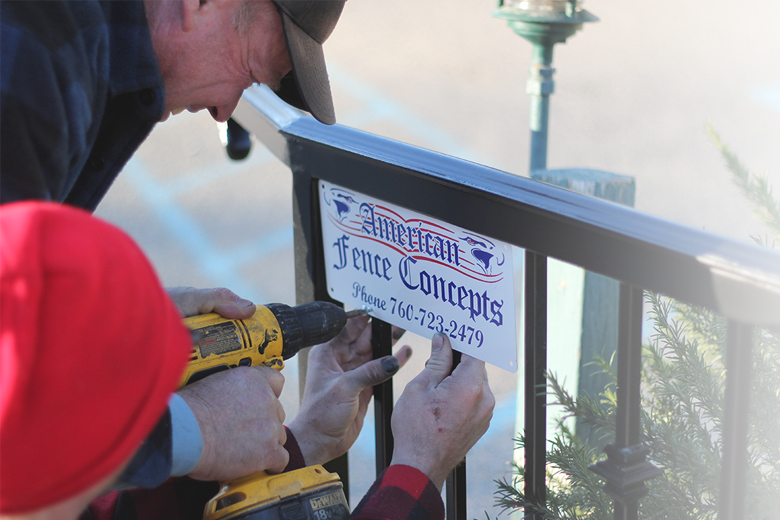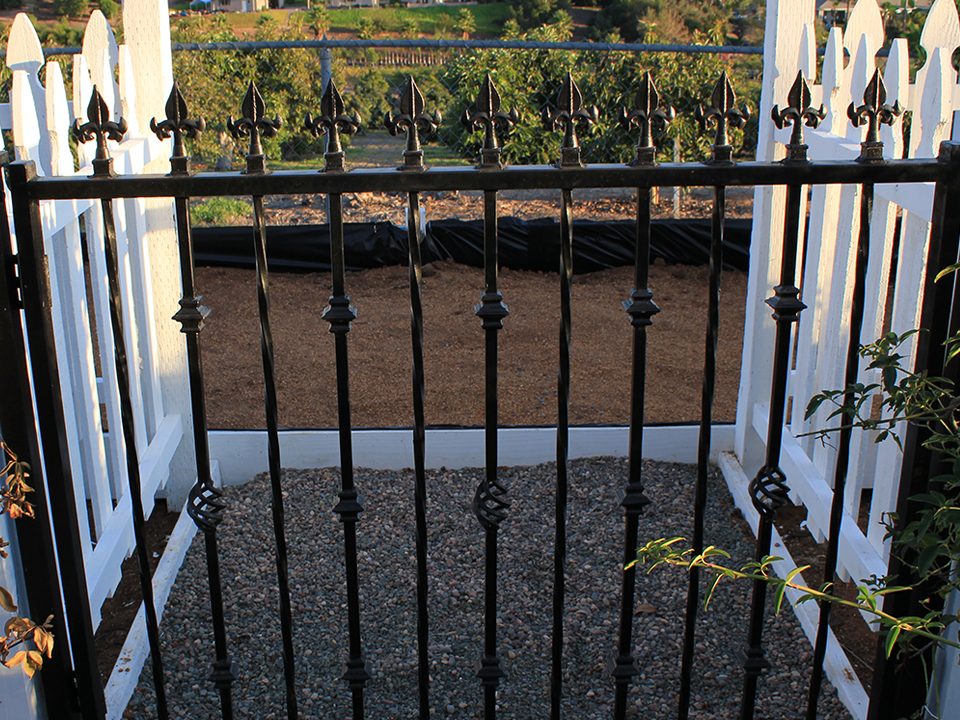- Custom Fence Design & Ornamental Iron
- 1-760-877-9951
- BPostal@AmericanFenceConcepts.com
- 2383 Via Rancheros, Fallbrook, CA 92028
Sustainable Fencing: Eco-Friendly Options in Iron and Composite Materials

Custom Fencing Solutions for Commercial Properties
March 15, 2025
Adding a Touch of Luxury: Custom Iron Fencing in Urban Residences
May 1, 2025In today’s environmentally conscious world, sustainability has become a driving force across all sectors of construction and design—including the world of fencing. Homeowners and businesses alike are increasingly seeking eco-friendly alternatives that not only protect and enhance their properties but also minimize environmental impact. Sustainable fencing merges the best of modern technology and responsible design, offering solutions that are both durable and kind to the planet.
This comprehensive post explores the growing trend of sustainable construction with a focus on eco-friendly fencing options. We will examine how traditional materials like iron are being reimagined through recycled and reclaimed options, and how innovative composite materials are setting new benchmarks in performance and environmental responsibility. By considering aspects such as production processes, longevity, maintenance, and aesthetic appeal, we will help you understand why sustainable fencing solutions are not just a trend, but a smart investment for the future.
The Rise of Sustainable Construction
Over the past few decades, sustainability has shifted from being a niche consideration to a primary factor in design and construction decisions. As resource depletion and environmental degradation become more pressing global issues, architects, builders, and homeowners are rethinking traditional methods. The construction industry has seen an increased emphasis on:
-
Recycled Materials: Utilizing reclaimed or recycled materials reduces waste and lowers the carbon footprint of new projects.
-
Energy Efficiency: Implementing energy-efficient processes and technologies in manufacturing and installation.
-
Eco-Friendly Finishes: Using coatings and treatments that are low in volatile organic compounds (VOCs) and less harmful to both the environment and human health.
These trends have naturally influenced the realm of fencing, where sustainability now plays an integral role in material selection and design methods.
Eco-Friendly Iron Fencing Options
Iron fencing, with its long-standing reputation for durability and strength, is finding new life through sustainable practices. Modern eco-friendly approaches to iron fencing include:
Recycled and Reclaimed Iron:
-
Recycled Content: Modern iron fencing can be produced using recycled steel and iron. Recycling not only conserves raw materials but also consumes significantly less energy compared to producing new metal from ore. This process reduces greenhouse gas emissions and minimizes waste.
-
Reclaimed Iron: Salvaged iron from older structures or decommissioned projects can be repurposed and incorporated into new designs. Reclaimed iron often carries a unique patina and historical character that can lend an artisanal quality to your fence.
Eco-Friendly Production Techniques:
-
Energy-Efficient Manufacturing: Advances in technology have led to improvements in production processes, making it possible to forge high-quality iron products with reduced energy consumption.
-
Low-Emission Coatings: Sustainable production doesn’t end with recycled materials. Many manufacturers now use water-based or powder coatings that are low in VOCs, reducing the environmental impact while still providing excellent protection against corrosion.
These practices make eco-friendly iron fencing an attractive option for those looking to combine traditional aesthetics with modern environmental responsibility.
Composite Fencing: A Modern, Sustainable Alternative
Composite fencing is another eco-friendly option that has gained considerable popularity. Made from a blend of recycled wood fibers and plastics, composite materials offer unique advantages:
Sustainability and Recycled Content:
-
High Recycled Content: Many composite materials are manufactured from post-consumer and post-industrial recycled content, which helps reduce landfill waste and dependence on virgin resources.
-
Renewable Resources: Some composites blend recycled wood with biodegradable components, further enhancing their eco-friendly credentials.
Durability and Low Maintenance:
-
Weather Resistance: Composite fences are engineered to resist weather-related degradation, such as rot, warping, and insect damage. This resilience translates to a longer lifespan and less frequent need for replacement or repair.
-
Minimal Upkeep: Unlike wood, composites do not require regular sealing, staining, or painting. This low-maintenance nature results in reduced consumption of chemicals and lower overall environmental impact during the life cycle of the product.
Aesthetic Flexibility:
-
Consistent Appearance: Composite materials can be formulated to mimic the natural look of wood while offering a uniform appearance with fewer imperfections. This consistency is appealing to homeowners seeking a modern, eco-friendly aesthetic.
-
Variety of Finishes: Available in a range of colors and textures, composite fencing provides versatility in design while maintaining a sustainable profile.
As building codes and consumer preferences shift towards greener construction practices, composite fencing emerges as a strong competitor to traditional materials—providing both form and function in a sustainable package.
Environmental Benefits and Long-Term Impact
Opting for sustainable fencing materials has several environmental and economic benefits:
Reduction in Carbon Footprint:
-
Lower Energy Consumption: Using recycled and reclaimed materials significantly reduces the energy required for production, thereby decreasing carbon emissions.
-
Extended Lifespan: Durable materials that require less frequent replacement contribute to resource conservation over time.
Decreased Chemical Usage:
-
Eco-Friendly Finishes: Sustainable coatings not only protect the material but also minimize the release of harmful chemicals into the environment during application and maintenance.
-
Reduced Maintenance Frequency: Low-maintenance materials, like composites, lower the overall consumption of cleaning agents and chemicals over their lifetime.
Cost Savings Over Time:
-
Reduced Lifecycle Costs: Although the initial investment in sustainable fencing might be higher, the longevity and low maintenance requirements ensure cost savings over time.
-
Increased Property Value: Sustainable, attractive, and secure fencing solutions often enhance property value—a significant consideration in long-term investments.
By choosing eco-friendly fencing, homeowners and businesses can contribute to environmental conservation while also enjoying financial benefits in the long run.
Design and Aesthetic Considerations
Sustainability does not mean compromising on style. Eco-friendly fencing options are available in designs that cater to both classic and contemporary tastes:
Blending Tradition with Modernity:
-
Rustic Charm of Reclaimed Iron: For those who appreciate historical character, reclaimed iron offers a unique aesthetic that can infuse your property with a sense of heritage and artistry.
-
Sleek, Modern Composite Options: On the other hand, composite fencing provides a smooth, uniform look ideal for modern, minimalist designs. The clean lines and consistent finish complement contemporary architecture while offering eco-friendly benefits.
Customization Possibilities:
-
Tailored Designs: Whether you opt for recycled iron or composite materials, custom design options allow you to tailor the fence to your property’s architectural style. Intricate patterns, personalized engravings, and unique finishes ensure that every fence is a one-of-a-kind statement.
-
Color and Texture Options: Sustainable materials are available in a wide array of finishes. Choose from natural wood-like textures for composites or select a traditional painted finish for recycled iron to match your exterior décor.
Integration with Landscape and Lighting:
-
Harmonious Outdoor Spaces: A well-designed fence should complement your landscaping. Eco-friendly materials, with their natural color palettes, tend to integrate smoothly into garden environments, creating a cohesive and inviting outdoor space.
-
Modern Accents: Consider incorporating energy-efficient LED lighting into your fencing design. Integrated lighting can highlight the sustainable qualities of the materials, create a striking nighttime effect, and further reduce energy consumption through smart technology.
These design elements ensure that your sustainable fence is not only good for the environment but also elevates the overall appearance of your property.
Maintenance and Long-Term Durability
A key advantage of sustainable fencing options is their reduced need for intensive maintenance, which further enhances their eco-friendly appeal:
Low-Maintenance Composite Fencing:
-
Durability: Composite materials are designed to withstand adverse weather conditions without warping, rotting, or fading. Their robust nature means that less frequent repairs or replacements are necessary.
-
Ease of Cleaning: A simple wash with soap and water is often sufficient to keep composite fences looking new, thereby reducing the need for harsh chemicals and extensive maintenance routines.
Eco-Friendly Upkeep for Recycled Iron:
-
Protective Coatings: Recycled iron fencing can be treated with modern, eco-friendly coatings that provide long-lasting protection against rust and corrosion. These coatings are formulated to be environmentally friendly, ensuring that upkeep does not come at the cost of additional environmental harm.
-
Routine Inspections: Regular inspections and preventative maintenance can extend the life of your fence significantly. Early detection of wear and damage ensures that small issues do not become larger, more resource-intensive problems over time.
The long-term durability and ease of maintenance of eco-friendly fencing contribute to a lower overall environmental footprint by reducing the need for frequent interventions and minimizing resource consumption over time.
Real-Life Examples and Client Success Stories
Real-life applications of sustainable fencing provide compelling evidence of its benefits and versatility. Numerous homeowners and businesses have successfully integrated recycled iron and composite materials into their fencing solutions, reaping a host of benefits.
One client, an environmentally conscious homeowner, shared, “We chose composite fencing for our backyard because we wanted a modern look without the constant upkeep. It’s low-maintenance, looks fantastic, and we love knowing it’s made from recycled materials.”
Another business owner recounted, “Our new recycled iron fence not only enhances the curb appeal of our property but also aligns perfectly with our company’s commitment to sustainability. The installation was smooth, and the long-term durability is exactly what we needed.”
These testimonials underscore that sustainable fencing is not just a theoretical concept—it is a practical solution that delivers on both environmental and aesthetic promises while also offering a solid return on investment.
Conclusion
The shift toward sustainability in construction is reshaping every aspect of building design, and fencing is no exception. Eco-friendly options, such as recycled iron and innovative composite materials, offer sustainable, durable, and aesthetically versatile solutions that address modern environmental challenges. By choosing sustainable fencing, you not only reduce your environmental footprint but also benefit from lower maintenance costs, enhanced durability, and increased property value.
Sustainable fencing provides an ideal balance of modern design, eco-conscious practices, and long-term financial benefits. It embodies a proactive approach to both protecting your property and preserving the environment for future generations. The integration of sustainable materials does not sacrifice quality or beauty—instead, it paves the way for innovative designs that are as responsible as they are elegant.
If you’re ready to invest in a fencing solution that delivers on sustainability, durability, and style, we’re here to help you create a greener, more beautiful outdoor space.
Call us now at 1-760-877-9951 to schedule a personalized consultation and discover how our eco-friendly fencing solutions can transform your property while contributing to a sustainable future.





